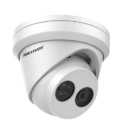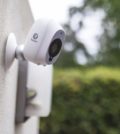Samsung Galaxy J2 vs Samsung Galaxy J7: It’s J7 all the way
Samsung doesn’t want to lag behind other brands in low budget smartphones and hence over the past few months it has launched a series of low budget phones to compete with its rivals. Its latest launch is the Galaxy J2 and Galaxy J7 which have excellent attributes and potential to capture the market. The new launch has been eagerly awaited as there was a lot of expectations from one of the leading brands. We have reviewed both the devices and bring a comparison between the two devices to help you take an informed buying decision.
Display and Design
The Samsung Galaxy J2 flaunts a 4.7-inch compact Super AMOLED display with a screen resolution of 540 x 960 pixels and has an average pixel density of 234ppi. The Capacitive multi-touch screen phone sports a coarse-textured back and metal body with curved edges. It has a dimension of 136.5 x 69 x 8.4mm and weighs 130 grams. In comparison to J2, the Galaxy J7 sports a much bigger 5.5-inch Super AMOLED display with high definition (720 x 1280 pixels) screen resolution. The phone has a shining anodized body with faux-metal side bezels and has a waistline of 7.5mm. The phone is slimmer but heavier than the former.
Configuration and OS
The Galaxy J2 generates its strength from a 1.3GHz Exynos 3 quad-core processor along with 1.GB RAM and Mali-T720 MP1 graphics card. The Galaxy J7 on the other hand is more powerful; it is powered by 1.5GHz Exynos 7 octa-core processor with 1.5GB RAM and Mali-T720 MP2 graphics. Both the smartphones are powered by Android Lollipop operating system.
Camera
The J2 is equipped with a 5MP autofocus main camera which takes vivid snaps and for selfies, it sports a 2MP front camera. The camera comes with inbuilt features like Continuous Shooting, Geo tagging, High Dynamic Range mode (HDR) and Touch to focus.
The Galaxy J7 outscores its competitor with an excellent 13MP main camera and a 5MP front snapper. The front camera is further accentuated by the presence of LED flash which doesn’t compromise in the quality of pictures captured in low light. It also includes Exposure compensation, Face detection, Geo tagging, High Dynamic Range mode (HDR), ISO control, Touch to focus and White balance presets inbuilt features. One of the major difference is in the quality of video recording. It shoots videos at 1,920 x 1,080 pixels in comparison to 1,280 x 720 pixels in J2.
Storage
The Samsung Galaxy J2 has an internal memory of 8GB which can further be expanded up to 128GB via an external memory card. As for Galaxy J7, the expandable memory remains the same, but the internal memory is doubled than in Galaxy J2.
Battery and Connectivity
The Galaxy J2 is fueled by a 2,000mAh li-ion battery which is non-removable in nature and gives a talk time of up to 10 hours on 3G platform; whereas the J7 is powered by a 3,000mAh li-ion battery to match the performance of the device.
The connectivity options on both the devices are more or less same. The two siblings are provisioned to support 4G, Wi-Fi 802.11, b/g/n, Bluetooth v4.1, USB Port, microUSB 2.0, A-GPS among others.
Conclusion
Before coming to the conclusion, it is imperative to remember that J7 is much costlier of the two galaxies, hence it is ought to be more powerful in terms of performance and built. The Samsung Galaxy has better configuration which makes it compatible to run heavy games and the bigger screen just enhances the experience of gaming and playing videos. The phone outshines its rival with a magnificent 5MP front camera with LED flash, making it a delight for the selfie lovers. The large internal storage capacity in J7 provides more space to install apps and store important files. To sum up, the Galaxy J7 is a mid-range smartphone designed to meet the needs of heavy consumers and people who prefer large phones, whereas, the Samsung Galaxy J2 is perfect in its own way; it comes with impressive configuration too and is ideal for multitasking and regular use.






0 comments